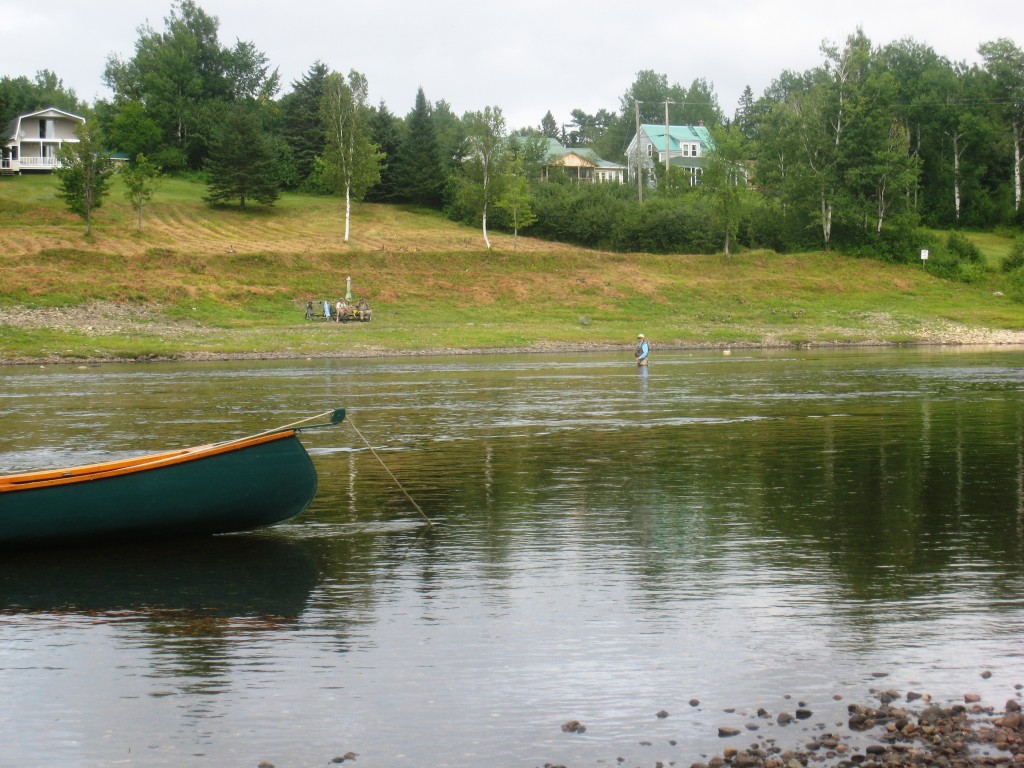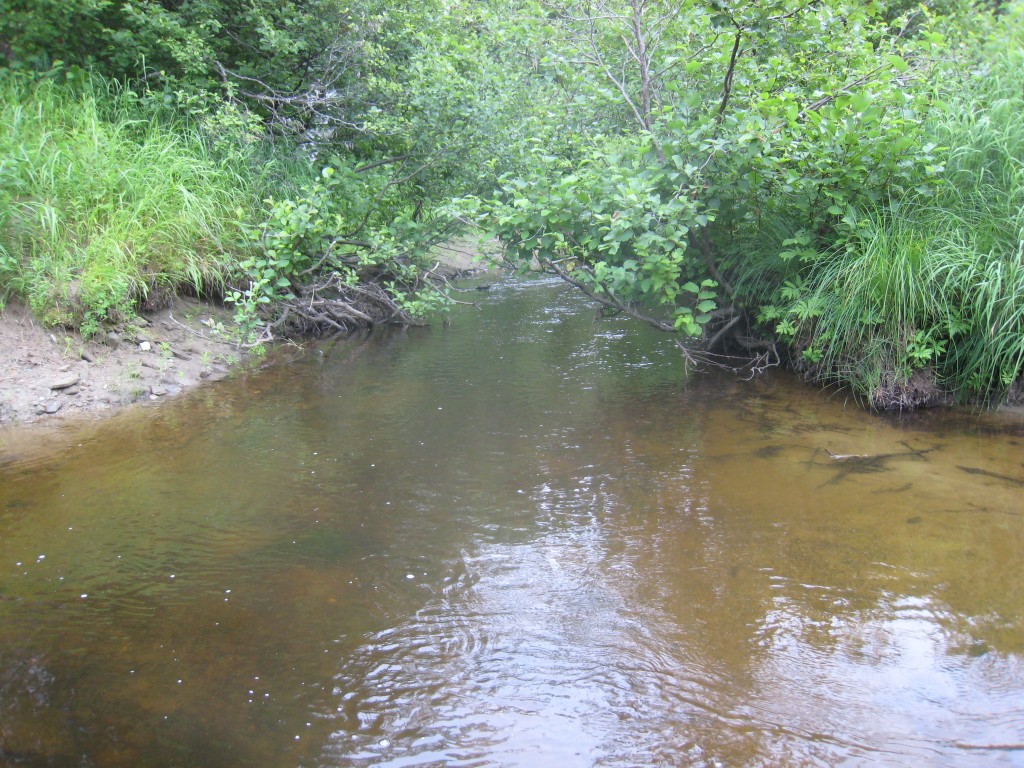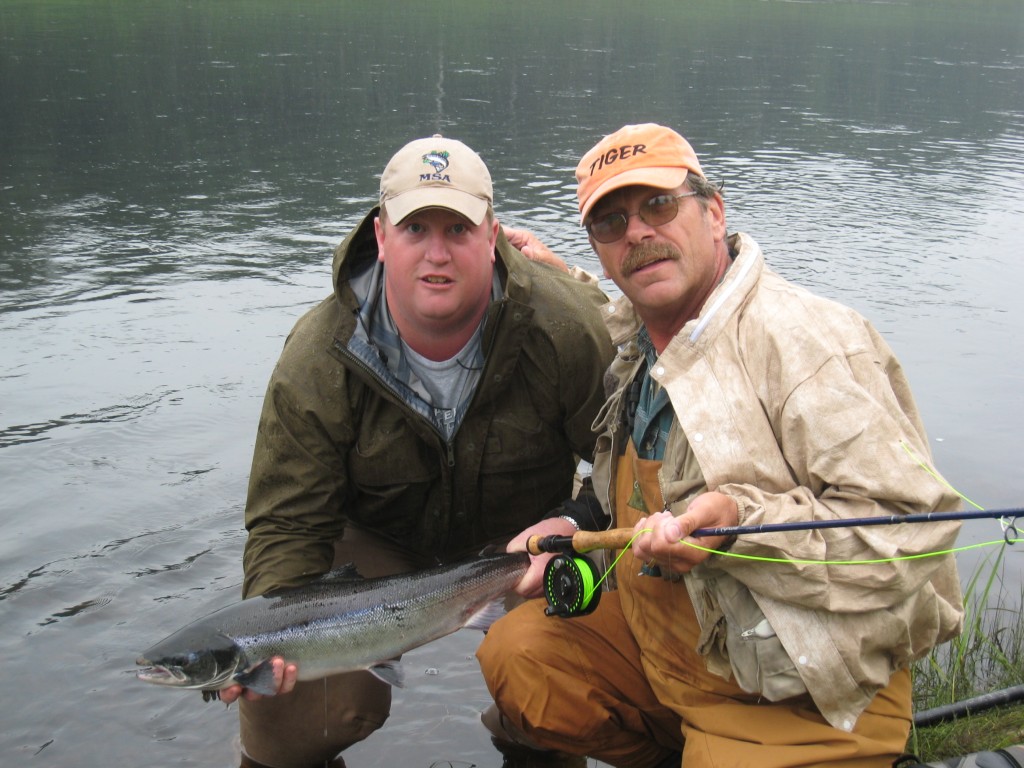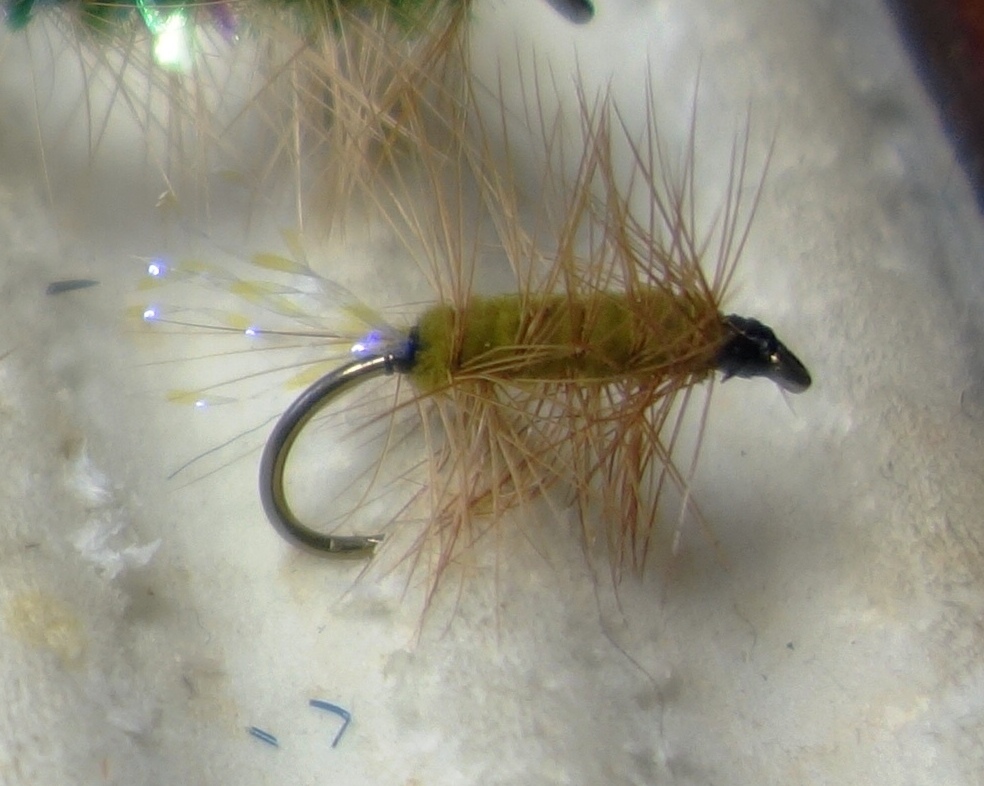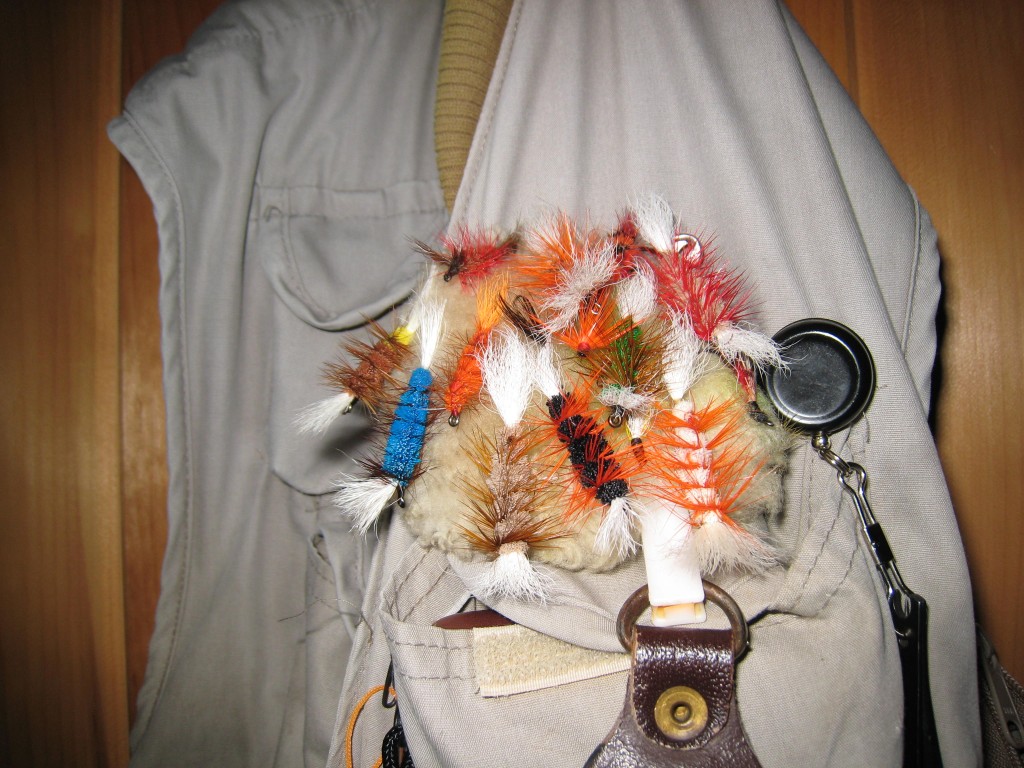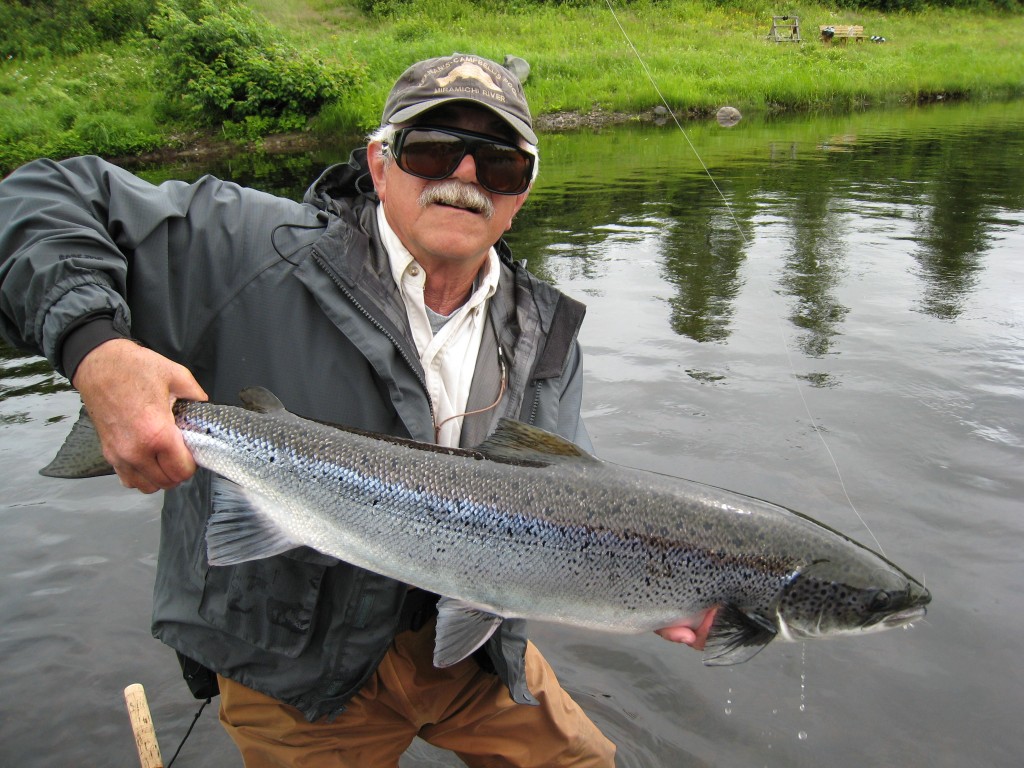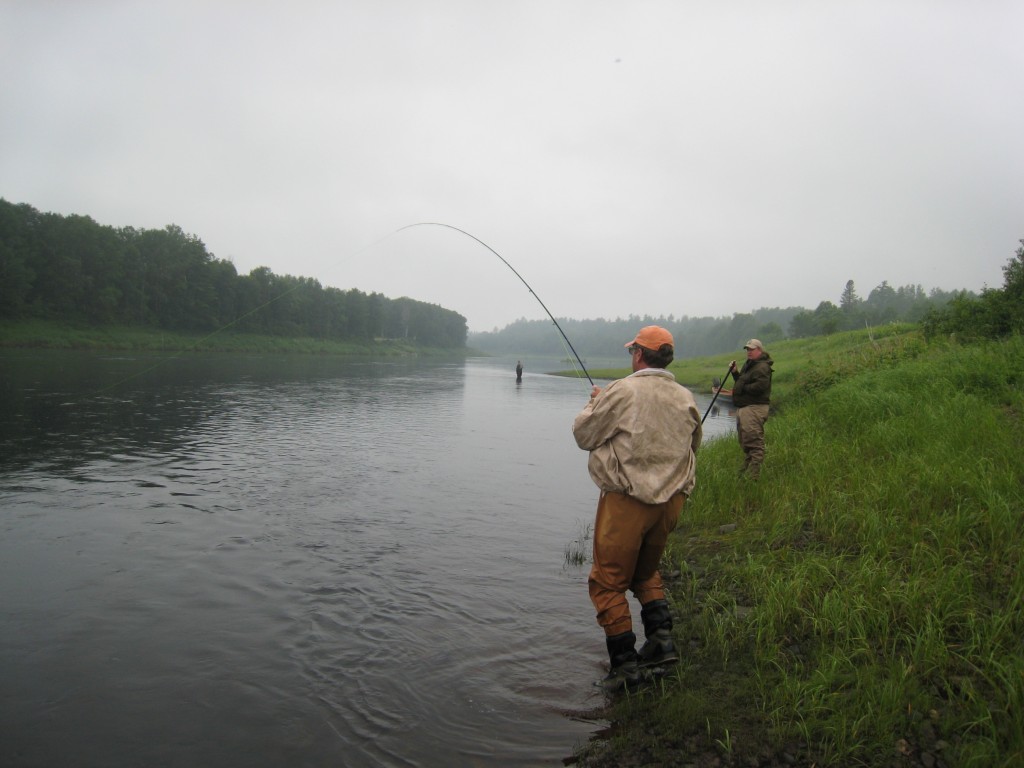
High Summer on the Miramichi
Miramichi Mid-Summer Salmon Fishing
From early July on to the first week of September we are in the mid-summer salmon fishery on the Miramichi. This is the time that most people probably think of when they contemplate salmon fishing in the Atlantic Provinces, and to borrow a line from Dickens, “this is the best of times and the worst of times.”
The quintessential period of warm sunny days and cool northern nights can indeed be the pattern on the Miramichi just as it usually is further north on the Gaspe or the North Shore of the Saint Lawrence. But sometimes it can be very different from that. The air and water temperature can be warmer than salmon can tolerate. Fresh fish will stop entering the system, and salmon already in the river will take refuge in the brook-fed pools where they will sulk and refrain from taking flies. It can rain heavily, and one can face periods of considerable raises of water that send fish scurrying upstream. Unlike the June or autumn raises, though, these are normally of quite warm water, and the fish don’t become as aggressive as they might at cooler times.
If you look at the graph I have posted here that reflects the salmon run of the Main Southwest Miramichi during recent years you will see that the summer portion of the run, specifically the early July portion is on average, the largest of the year. The fish may take better in June or even late September, but there are many more of them to fish for during July if conditions are decent. Nearly all of the very best days that I have seen on the Miramichi, in terms of the number of fish that come to the fly, have been during July. 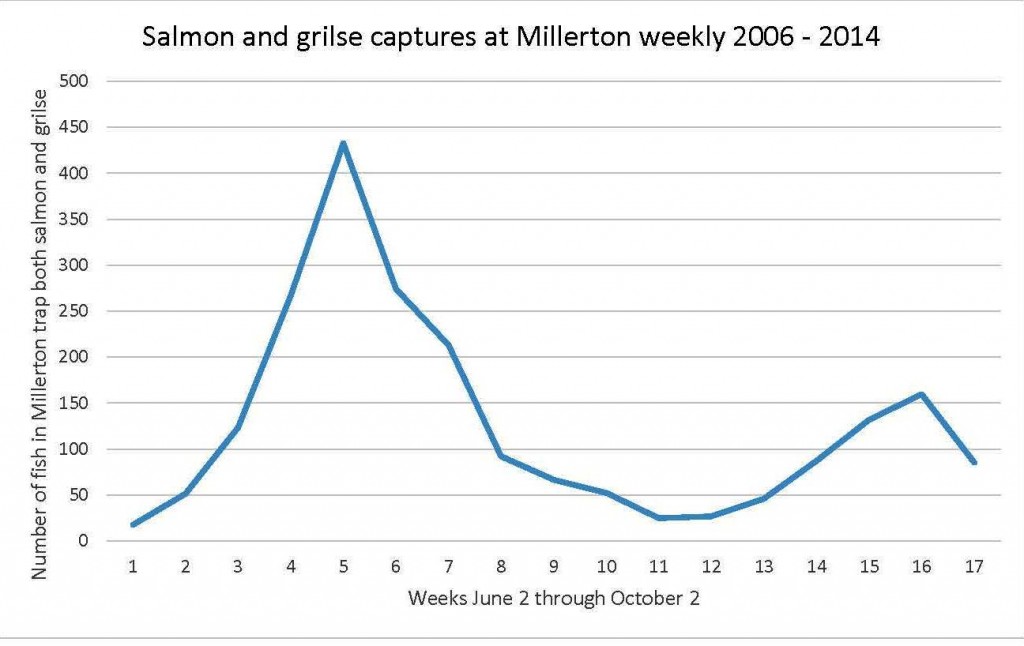 On top of that these are not the colored fish of fall but rather they are very much like the June fish – sleek, incredibly strong, silver bullets. As the season moves into late July or early August the first fish will appear with a coppery color on their upper sides. By the end of August most fish are quite colored, though not nearly as dark as the fish of late September. This is the case even with fresh fish carrying sea lice, since the fish holding in the tidal estuary gradually turn color in preparation for ascending the river.
On top of that these are not the colored fish of fall but rather they are very much like the June fish – sleek, incredibly strong, silver bullets. As the season moves into late July or early August the first fish will appear with a coppery color on their upper sides. By the end of August most fish are quite colored, though not nearly as dark as the fish of late September. This is the case even with fresh fish carrying sea lice, since the fish holding in the tidal estuary gradually turn color in preparation for ascending the river.
In general, after the relatively high, cool water of June subsides, the fish coming up the river for the rest of the season are far more likely to take up a brief residence in pools that they like along the way. They may not be stopping for very long, but what we do find is that on top of the intermittent movements of new fish coming daily up the river, that most of the good pools along the river now have fish holding in them. These fish are often more hesitant to take a fly then fresh arrivals, but from time to time many will take, and they make the fishing down through a pool much more interesting.
Summer Flies
Summer is prime time for bombers and small wet flies. Probably no salmon fly in North America is more popular than the green machine. For some years I have been tying most of my green machines with alternative body materials. The reason is not because the deer hair isn’t fishy. I’d never bet against a natural material like spun deer hair, but deer body hair it is quite buoyant even when closely cropped. There are two alternative materials that I have become fond of. One is peacock herl. I take about four, long peacock herl feathers and wind them on together like strands of floss. This produces a nice segmented look, and offers the incomparable sheen of peacock herl. It also makes a comparatively thin body for small flies and once wet it sinks nicely. It is very delicate, though, and the teeth of even a small grilse can wreck the fly. I generally use the herl to make only my smallest flies and use them during the lowest water conditions. Another material that I use a lot is chenille. I like the flash or variegated material for flies from #6 and up, but it is a bit large for #8 and smaller. Micro or ultra-chenille are my favorites for the smaller sizes. Last year in the warmer months I had several days of good fishing on a #10 green machine tied with olive micro chenille, a properly sized brown feather and some clear crystal flash for a tail that stuck out just a tiny way beyond the bend in the hook. The thing l like about these flies – in addition to their good looks – is that they get under the surface fast and stay there.
My salmon fishing friends will be surprised to hear me going on about green machines, because it is so often that even when others are catching on the green machine I am fishing the small black stuff: black ghosts, black bear green butt, same thing Murray etc. One thing I do like about the action and appearance of the green machine versus the traditional wet flies is that you can show a very different fly to a fish that you have rolled but that has not struck.
Bombers take some experience to tie well. If you can do it you then you don’t need any instruction from me. If you can’t then I’d suggest that you go to one of the several good fly shops along the Miramichi and buy some. It is hard to beat standard issue natural colored bodies with brown hackle and white wings and tail. On the other hand I’ve seen it when they’d look at nothing but green bodies with orange hackle. I also have developed a lot of faith in blue bombers. As a general rule large bombers – #4 and even #2 – are the most productive, but I would certainly have some #6s with me. There are times when tiny dry bugs will take fish that won’t look at anything else, but those days are very rare and by my experience take place only in ultra-low water conditions.
Wet Fly Presentation In Warm Water
Perhaps the single most defining feature of mid-summer salmon fishing is the water temperature. Whether the water is high or low it will not be cold. A day-time temperature below the mid-60s in July or early August is almost unheard of. Late August can be cool and a transition time. Water temps can start to drop significantly then if it is an unusually cool season, but that is hard to predict.
The warmer water will almost invariably mean more hesitant takers, and a definite inclination towards small wet flies and very often to bombers or other dry flies like the comparatively low-riding whiskers. As the water approaches 70F the fish will be attracted to the pools with a cool water source giving them a little temperature buffering. It is also likely that the time of the day when the fish will take a fly is limited to early mornings or very late in the evening – the mornings being preferable in my book. Very cloudy and especially rainy days, though, can produce good fishing in what would otherwise be very difficult conditions. If you are on the water and the stars line up so that the fish are taking, then make the very most of it, because the bite won’t last indefinitely. I have gone out at 5:00 PM and done nothing until almost dark when suddenly this cast got a pull, a couple of casts later I hooked a fish, and then the rod fishing just upriver hooked a salmon etc. The bite might last for maybe 45 minutes until it begins to get really dark. Even more often I have landed two or three salmon in the first hour or two of daylight and then the fish simply shut off and remained off all day. Had I missed that early fishing I might have gone fishless.
In warm water the best wet fly presentation is usually a slow, steady swing. The takes are gentle plucks and not savage, surface-rending lunges. I like small flies and long, light tippets that enhance the fly’s presentation. A #10 fly appears to be attached to coaxial cable if you fish it on 12-pound test. Mid-summer standard issue for me is 6 pound Maxima. I like to just add two feet of this light tippet onto the end of an 8 pound test tapered leader. The fly moves nicely on this light tippet and I believe that the stealth from the extra length can’t possibly hurt. I have often gone to 4-pound, but that requires very low and warm water when we are getting down to #12 or so salmon flies. People can say what they want, but #12 is small by Atlantic salmon fly standards. I have gone to #14, but rarely, and I don’t know that it helped. I’d rather tie just a bit sparser on a #12.
If you raise a fish that doesn’t take the fly, the advice I gave in December on early fish still applies: if you get a rise make the same cast again, on the next cast pump the fly as it nears the fish, try walking back up 6 feet and coming down to the fish slowly, try a similar pattern to the one that interested the fish, but in a smaller fly, always try the fly you first rolled the fish on before you give up. Also, if you are within easy casting range try walking back up and inshore from the fish a few steps. Work the fish from this position and the different angle it will represent. Don’t just keep doing the same thing that isn’t working; you will only drive the fish deeper into its reluctance to take. Marking the fish’s location and returning to it a little later will often be productive.
********************************
Have you read Closing the Season: Salmon Fishing in New Brunswick on the Miramichi and Cains Rivers? Here is what Western trout guide and instructor Brian Ramsey has to say about it:
Brad, your book is a wonderful read! I hope to write books like yours someday soon.
It really is a great book and huge tribute to Miramichi people and fish and culture!
Brian Ramsey
For more information or to order go to bradburnsfishing.com
*********************************
Fishing the Bomber
If you raise a fish on a bomber, and you are confident that you know where it is holding, then unless you have clearly better prospects it is worth it to continue to work that fish. Lee Wulff said that a fish that would roll at a dry fly could be caught. I’ve certainly failed on many occasions to prove that to be 100% correct, but I have also spent a half hour and presented a dozen different bombers to a fish before it finally just slurped one right down. Long-time Miramichi guide Gary Colford said to me about bombers, “Just keep casting and keep changing colors until you find one that the fish wants.” I also remember Jason Curtis saying to me that his sport had worked over the water with a wet fly, and then a traditional brown hackle and natural deer hair bomber without a look. “Then we put on a dark green-bodied bomber with orange hackles and the fish were all over it.” I’m a big believer that size, shape, and color can be very important in bomber fishing.
You can search with a bomber, by starting in close and gradually lengthening out your line, casting to a little different position every time until you locate a fish. The best presentation is roughly cross current from you and possibly a little downstream. If conditions are right a bomber will easily out fish a wet fly. If that is what has been working for days, then I’ll start right out with the bomber. Most of the time, though, I like to start with a wet fly because it covers more water. If I’m seeing fish rolling on the lies in warm water, especially if they don’t show any interest in my wet flies, then I am quick to switch to the bomber. There have been a great many times when I worked a fish hard on a wet fly and never got a solid pull, yet the same fish inhaled a bomber on its first pass overhead.
There are lots of opinions about bomber presentation, but the basic style that I learned from Matapedia guide du saumon Peter Firth has worked out the best for me. This is a technique to be used when searching. Cast the bomber out so that it lands moderately on the water – don’t drive it into the water. The bomber should then drift about 4 feet – I will sometimes go 6 or 8 but no more. Pick the fly up off the water without yanking it and scaring the fish. The next cast should put the fly right where you picked up the previous cast. In Peter’s experience the gentle plop of the fly on the surface is vital to the fly’s attractiveness.
If you are casting to a holding fish the best presentation to start is for the fly to land about three feet above the fish. At this distance the landing of the fly can’t be missed, but it is far enough above the fish to give the fish an opportunity to take. Many times, though, the salmon will let the fly go by him and then turn and take it from behind. Some other times putting the fly right on the fish’s head will cause it to strike violently. Sometimes a dozen seemingly well-presented casts will yield nothing and the next one will catch the fish. “Keep casting and changing colors until you find what the fish wants.”
One of the questions that I get asked the most is “when do I switch to the bomber”? There are several answers to that question. First, except out of desperation I would only fish a bomber during low to moderate heights of at least moderately warm water. Without the right conditions there are long odds against doing well with a bomber. Secondly, I would work only spots where I know or have a very good reason to believe, that a fish is holding. When I work through a pool I always have an eye open to see a fish rise that appears to be holding on one of the lies downstream of me. If the fish takes my wet fly then that’s great, but if it doesn’t then I will continue downstream, moving by it, and when parallel I’ll stop, clip off the wet and tie on a bomber. It is far from unusual that the fish that let that wet fly pass will take the bomber on the first pass. This technique has really worked very well for me over the years.
New/Old Techniques
There always have to be new plans and ideas for the coming season’s fishing. After Willy Bacso died unexpectedly in 2009 Wayne Curtis, Jason’s father and author of a number of books about his beloved New Brunswick, guided at Campbell’s for the summer to help me out. Wayne has guided most of his life, first for his father who outfitted on the Miramichi and the Cains, then for many summers for his relative George Curtis at the Black Rapids Salmon Club downriver in the Rapids.
Much of the Miramichi, said Wayne, is relatively slow water, but it is possible to take salmon from slow pools with various techniques. One of these uses a fly developed in the 1950s for Miramichi salmon fishing by Maurice Ingalls. The fly is called the butterfly. Wayne said that, “For many years the butterfly was the high hook on the river, then the green machine came along and now everyone uses it.” This link gives you some easy to follow tying instructions, and the Miramichi area shops all sell the fly. According to Wayne the light wings of the butterfly pulsing back and forth in the water are accentuated when you use short strips and brief pauses in between. Wayne suggests casting straight across the flow and stripping back. I have used it a little, but not enough. One of my resolutions for this coming summer is to try this technique more often when the water is warm, low and slow moving, but fish are present and holding.
Miramichi Salmon Assoc. US Fund-Raising Dinner
We had a great time on Saturday afternoon and evening January 30, in Burlington, MA. In the afternoon we saw presentations by scientists who are using advanced technology to help manage the Miramichi watershed for its greatest potential to stay cool during summer months. Part of the presentation was by a young graduate student whose work won him a $10,000 scholarship from the MSA. There was also a presentation on a variety of initiatives being undertaken by a coalition of industry and conservation organizations to help bolster the numbers of Miramichi salmon. The MSA is always at the forefront of Miramichi salmon conservation efforts, and anyone who is interested in the future of this fishery should make the annual investment in membership.
At the end of the dinner two men walked up to my table carrying copies of Closing the Season. The men were a pair of middle-aged dentists from Fredericton, NB who were the twin sons of the late Herb Wade – himself the son of Wade’s Fishing Lodge founder and salmon outfitting pioneer Charlie Wade who founded the famous organization in 1932.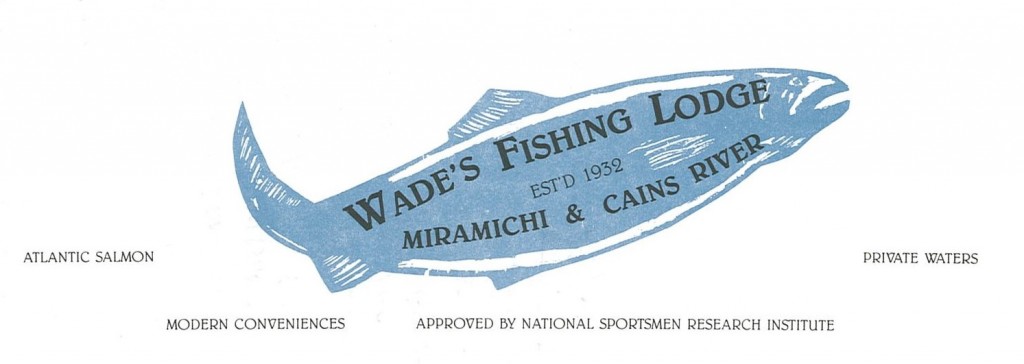
It was a big thrill for me to meet these brothers, who while looking well-dressed and prosperous had the thick, rugged appearance of outdoors men. We swapped a couple of stories, and I told them how impressed I’d been to learn that their father Herb Wade and his wife had simultaneously been the men’s and women’s casting champions for the Province… One of the twins smiled slightly, and said with lightly suppressed excitement that, yes, that was true, and the same year that he had won the junior division. What a legacy! These things add greatly to the romance of the salmon fishing culture of the Miramichi!
Fall Installment
In early March I will make my annual trip to Scotland to fish the River Naver for “springers” a term that refers to their early run Atlantic salmon. I plan to get the Miramichi fall fishing segment out before I leave.


